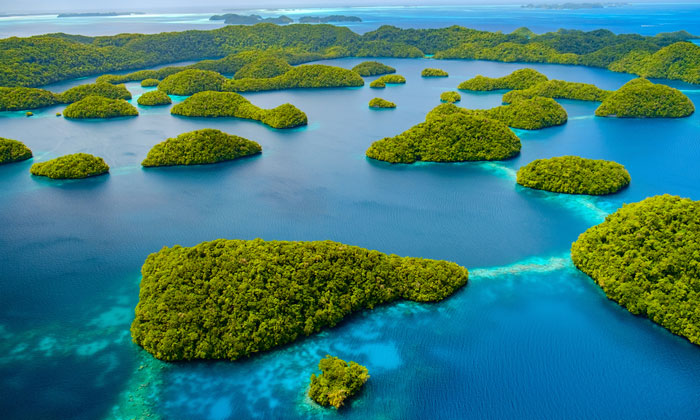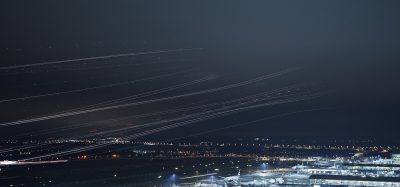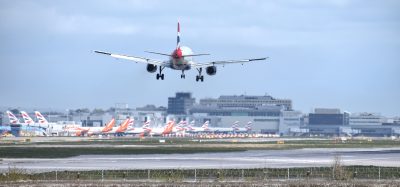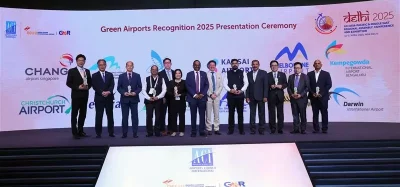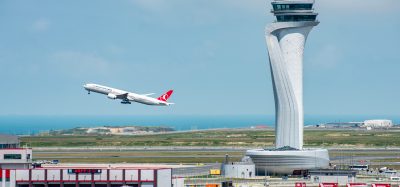No Country Left Behind: New Zealand’s key collaboration with the Pacific Islands
- Like
- Digg
- Del
- Tumblr
- VKontakte
- Buffer
- Love This
- Odnoklassniki
- Meneame
- Blogger
- Amazon
- Yahoo Mail
- Gmail
- AOL
- Newsvine
- HackerNews
- Evernote
- MySpace
- Mail.ru
- Viadeo
- Line
- Comments
- Yummly
- SMS
- Viber
- Telegram
- Subscribe
- Skype
- Facebook Messenger
- Kakao
- LiveJournal
- Yammer
- Edgar
- Fintel
- Mix
- Instapaper
- Copy Link
Posted: 6 March 2017 | Roy Manuell, Digital Editor | No comments yet
Athol Glover’s work in the Pacific represents precisely what the wider aviation community needs to achieve. Athol Glover represents mutual accountability.
An example of collaboration, mediation and a responsible understanding of regional diversity in order to grant developing nations autonomy and self-empowerment and bring visible meaning to ICAO’s motto: ‘No Country Left Behind’…
The Pacific Islands – often seen as home to some of the most naturally-rich pleasure resorts, international wildlife hubs, untouched zones of inexplicable beauty, hosts of David Attenborough documentaries, rugby giant killers (the list could go on) – are often forgotten as being habitats in which a unique and eclectic culture of people live.
From the perspective of the aviation industry, the Islands’ infrastructure is understandably limited but fundamentally essential to transportation between each nation. Crucial to this article however, their aviation infrastructure and its maintenance remains reliant upon assistance from New Zealand and to an extent Australia.
As part of our closer look at the Asia-Pacific region, International Airport Review will assess the extent to which the relationship between New Zealand’s aviation network and the Pacific Islands is emblematic of precisely what ICAO’s ‘No Country Left Behind’ motto is striving to achieve.
After an exclusive conversation with the Civil Aviation Authority of New Zealand’s Principal Aviation Security Advisor, Athol Glover, we consider why the support Athol provides for the Pacific Islands should be considered a model for a wider, global effort to improve a collaborative, international approach to aviation and more specifically aviation security.
“If ICAO want a global aviation network that necessarily ensures that there is ‘No Country Left Behind’ they need to come and see what the Cook Islands, Vanuatu and Tonga are doing and either advise or congratulate them. What I say is let me mediate that relationship to ensure that both ICAO and the Pacific Islanders have a mutual understanding and appreciation for each party is doing and requires. Let’s do this together rather than in isolation.”
Aviation in the Pacific Islands
New Zealand deals with eight Pacific Island nations of which two are realm countries between which New Zealand citizens can move freely (the Cook Islands and Niue Island).
Athol smiles, proudly sporting a brightly-coloured short-sleeved short as he goes onto describe his role within the important relationship New Zealand has with the Pacific Islands.
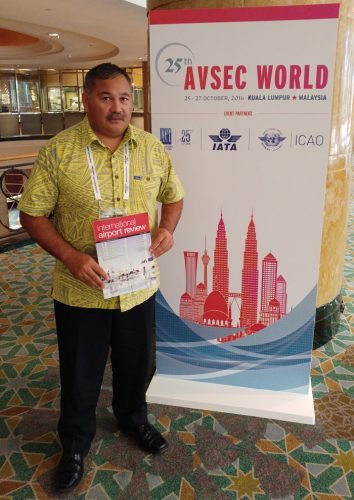

International Airport Review spoke exclusively with Athol Glover CAA NZ at AVSEC World in Kuala Lumpur in 2016
“Oh and of course, we can’t forget that the Pacific Islands also include Samoa and Tonga with whom we have a treaty of friendship – and they help us fill our All Blacks rugby team!”
Athol tells International Airport Review that he represents CAANZ on a committee that administers a Security fund, provided by the New Zealand government, to maintain aviation security across the Pacific Islands.
The support Athol provides for the Pacific Islands should be considered a model for a wider, global effort…
Both New Zealand and Australia oversee regular flights to and from the Pacific Islands, the Cook Islands for example very well connected to both Auckland and Sydney.
“It’s a small place,” Athol mentions as he describes the routes between New Zealand and Niue Island.
“I hope tourism doesn’t ruin it – it needs to be preserved.
“Virgin Australia also flies out to Samoa, Fiji and Tonga from Australia so there are some major industry players involved in the region – Fiji is the hub of the Pacific Islands.”
Athol wishes to dispel any view of the Pacific Islands as a paradise for tourists as it is clear that there is much work to do to ensure that aviation remains safe and secure.
“The Solomon Islands are just something else,” Athol leans forward, suddenly serious.
“People have this impression that the Pacific Islands are sunny, beaches and palm trees but there’s a lot that needs to be done in order to ensure we meet our international obligations.
“My role is essentially to help the Islands on behalf of the New Zealand government, but essentially we want them to drive it themselves.”
Athol’s role in the management of aviation infrastructure in the Pacific Islands represents a model for progress towards actually fulfilling ICAO’s ‘No Country Left Behind’ motto…
As a sort of mediator, in this article I wish to argue that Athol’s role in actively encouraging autonomy in the management of aviation infrastructure in the Pacific Islands represents a model for progress towards actually fulfilling ICAO’s ‘No Country Left Behind’ motto.
“Better leadership is very much required in the region,” he continues.
“It is up to those nations with strong aviation networks to help those get up off their feet and give them the capability to manage themselves.
“It is in our [New Zealand’s] interest – certainly from a security perspective. If the Pacific Islands were to become autonomous in managing their own aviation infrastructure, environment, roles and responsibilities then I have done my job.”
But Athol’s example shows that it’s up to those with the economic power and knowledge to empower those in need in order to create and implement a safe and secure, fundamentally-global, aviation security network.
So what are the main issues that currently face the Pacific Islands?
“Well, safety for one,” Athol begins.
For example, an issue specifically affecting runway maintenance might block all travel to and from a particular island which would have an extremely damaging effect on both tourism and the economic output of that particular society.
“All of the Pacific Islands nations that New Zealand assists have their own unique issues,” Athol explains.
“These vary from having the appropriate infrastructure in place to achieve the security outcomes, leadership and most importantly, accountability. A success we have enjoyed in the past is that we have trained local technicians in how to service and maintain their x-ray screening systems.
“One of the main issues is a lack of comms as internally the islands don’t discuss issues and problems-solving possibilities.”
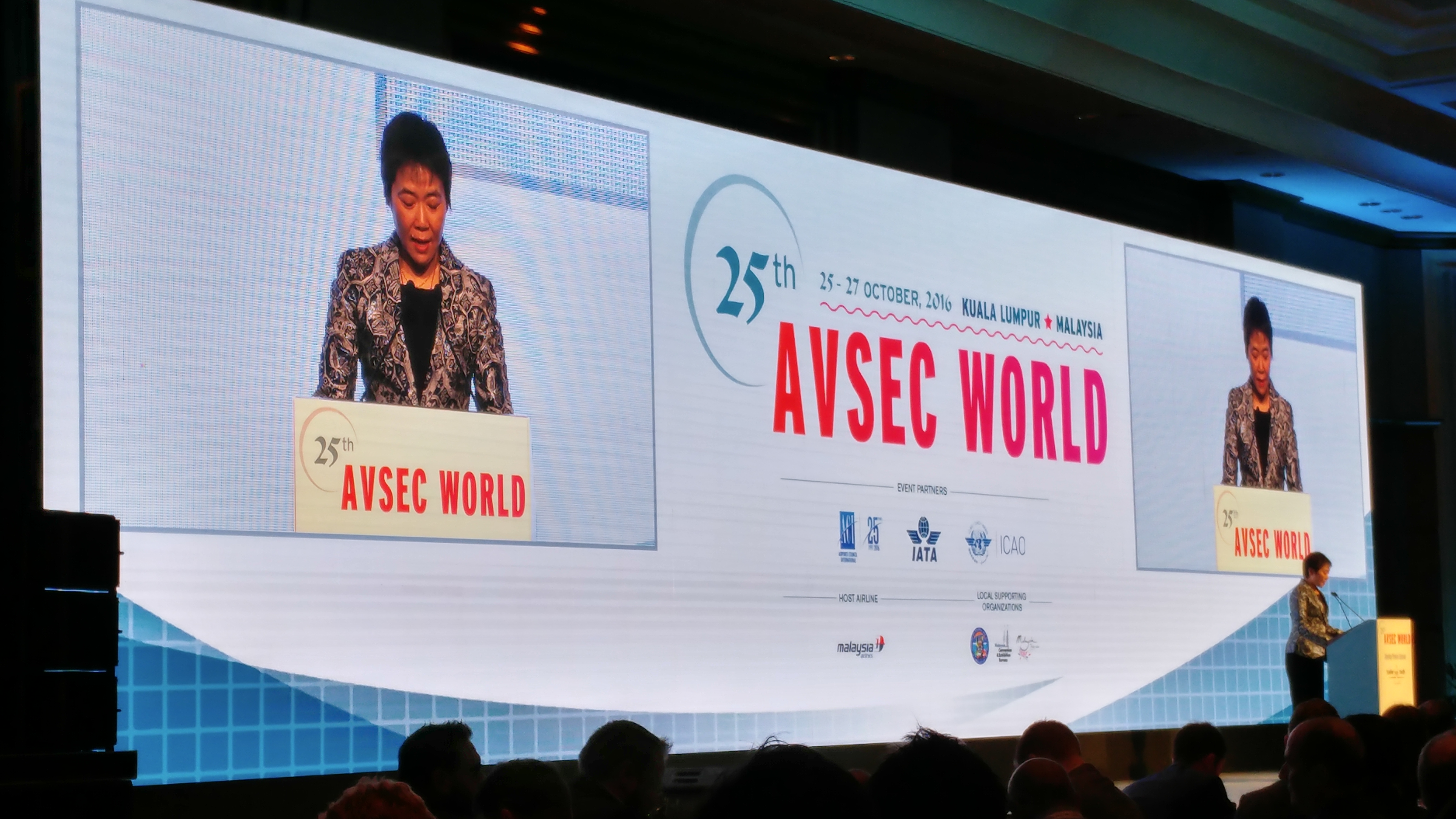

The rhetoric we heard at AVSEC World now needs to be acted upon…
Having met at AVSEC World, it strikes me as Athol details the intricacies of the situation that his role in the Pacific Islands’ development is perhaps a microcosm for what should be done for the wider aviation network.
Firstly, the rhetoric at October’s AVSEC conference, and largely applicable to the entire industry, was defined by the idea that we must ‘collaborate’ in order to security and also wider industry issues. What is typically meant by this is the unification of airport, airline and regulator alike to find collective solutions to collective problems.
See International Airport Review‘s coverage of the event here…
While the Pacific Islands might not communicate with one another, this issue seems symbolic of a wider industry problem – the lack of collaboration and discussion.
What Papua New Guinea and other Pacific Island States must now do is talk to Tonga and other partners…
Returning to Athol’s conversation, he sets out the example of Papua New Guinea. The island, in the southwestern Pacific, is known for its immense cultural and biological diversity as well as its beaches, volcanoes and coral reefs, and currently has a model that grants responsibility to the national airways corporation for screening and baggage handling who outsource to private contractors. There may be a possibility for some changes and how things can done more efficiently and effectively.
“We don’t need to reinvent the wheel,” Athol exclaims, evoking Tonga’s model that has an in-house approach of providing security and screening services which is a model that works well.
“What Papua New Guinea and other Pacific Island States must now do is talk to Tonga and other partners to learn from what they are doing.”
So would you consider what Tonga is doing as a model for many of the other islands?
“Yes, absolutely,” Athol replies stating that he has been happy to act as a mediator between the two parties.
“Collaboration is starting but mediation and most importantly talking to the right people is required.”
Communication is a complex issue
“Another issue I have to deal with is budgeting. Pacific islanders budget but not to the extent of having provision for routine items, I suppose they have never been taught how to deal with budgeting for various things x-ray machine parts, replacement radio batteries, routine maintenance and specialist training activities.”
Athol then moves onto an anecdote regarding the use of handheld radios.
“They had no comms or radios in Tonga and members of staff were going out at night to check things and had no means of reporting back. Therefore, if they spent too long, others would be sent out… you can see where this is going, can’t you,” he laughs.
“What if you had a radio?” I then asked them.
“Oh that’s a good idea,” one of them said and so acknowledging the issue I sourced them some radios, funded by the New Zealand government’s budget.
“Several months later the very same people got back to me and asked: “Is there any chance we could have 12 more radios Athol?”
“I thought for a minute before replying: “Is there any chance you could budget for them?”
“I had already set the foundation for them,” Athol continues, “so sometimes it is necessary to say no to requests in order that they learn from what has happened.
“I told them: “When you do your annual budgets, set money aside for radios but not just that, put money aside for maintenance and batteries. You need to think ahead of just the present.”
“While there is a pot of money in New Zealand to be utilised but it must be used wisely as it is not infinite.”
A cultural issue?
It seems that the issue of mediation from New Zealand is often cultural miscomprehension.
“Pacific Island people are reserved by nature and so it is often up to external sources to set up channels of communication. The problem with this is that external parties often go about it in the wrong way.”
ICAO’s security training centre in Auckland runs a variety of ICAO courses each year and usually Athol receives sponsorship to send Pacific Islanders down to the centre, but recently he has organised courses on the islands themselves thus spreading the training to a far wider audience as much of the previous expenses are spared.
“Previously, I could only fund a couple Pacific Islanders per course and amongst the mainland Asian people and New Zealanders also on the course, the Pacific Islanders don’t engage in the course and often just sit there in silence, intimidated.”
Pacific Island people are reserved by nature…
This is an example of the need for cultural awareness and sensitivity in order to create an environment of learning within which Pacific Islanders might be best instructed on how to improve security practices.
“Too often – and this isn’t the fault of the instructors nor the other students – Pacific Islanders are ostracised by teaching methods and thus New Zealand sees no return on its investment in supporting them on the courses. Now that I am able to mediate courses on the islands themselves, this has largely resolved the issue.”
The case study of Oscarlina – a certified security instructor in Tonga
Oscarlina Tapoki, Manager, Quality Assurance at Airport Authority Cook Islands is native to the Cook Islands and an example of talent that has originated and remained in the Pacific. Athol describes an occasion when he took Oscarlina to Tonga to accompany him for a routine visit and training activity.
“Tonga is a nation that is very formal with respect to events and will habitually insist on opening and closing ceremonies. When Viliami Ma’ake, CEO of Tonga Airports, introduced Ocsarlina to his staff the Avsec Tonga staff became very emotional. Why? Because she was one of their own people, a Pacific Islander who was not a stranger and someone who had worked very hard in achieving qualifications to enable her instruct in certain training activities, where Oscarlina was able to do this in Tonga.”
Athol then used Oscarlina as a model: “This could be you,” he explained to the audience in Tonga.
“You people can achieve things if you really want – but it’s ultimately up to you,” before saying that the model of Oscarlina could one day be one of them, them being one of those in attendance of the opening ceremony – students of and those working in aviation in Tonga.
Though extremely proficient, at the end of the day, the instructors from New Zealand don’t share the same connection to the islanders. The ideal situation from a sustainable outcome perspective would be to have a pool of Pacific Island instructors delivering training activities. It is for this reason that Athol is moving towards identifying and encouraging Pacific Islanders to themselves instruct. As part of this we need to ensure that a clear development plan is put in place for such individuals.
Ownership, autonomy and independence
“This is a model the global aviation community needs to adopt,” he explains and it’s hard not to agree.
“Provide the initial training and then encourage autonomy as strongly as possible. Ultimately, you have a greater connection with an instructor who is culturally similar to yourself.
“The dream scenario, I suppose is when my job as a mediator is no longer as important.
“We need to give the islanders ownership, autonomy and independence.”
As the discussion continues, Athol mentions a conversation he had at AVSEC WORLD with an IATA representative during which he asked for assistance in dangerous goods instructor training for Pacific Islanders.
“The answer wasn’t a ‘no’, that’s all I can tell you,” he laughs.
This would certainly help relieve the perhaps unfair economic burden on the government of New Zealand.
“IATA airlines are using the Pacific Islands routes. Why shouldn’t they assist in ensuring the safety and security of aviation in the region. They arguably have an inherent responsibility to assist.”
So what is the process itself of checking and mediating the Pacific Islands’ progress?
Athol will typically liaise with an appointed commissioner on each island from the New Zealand government.
“My commissioners in the respective islands are very supportive and I will often spend the last day of my trip with them to give them a comprehensive debrief on what progress has been made on the island.
The problem with talent
The fundamental issue plaguing the region however seems to be the retention of its talent.
“Once we train up a talented individual, the risk is keeping them in the region. The attrition rate is extremely high.”
“We forever need to factor in net redundancy.
“We simply can’t pay enough to keep the best here and many that leave reply: Why stay to screen bags if I can leave and get paid more at a detention centre.”
Tourism & assurance
The Pacific Islands are dependent on tourism so if the security and safety of its aviation infrastructure is not assured then there are significant economic implications.
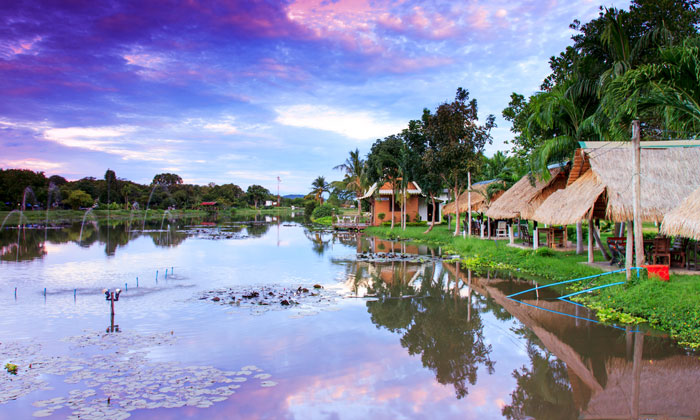

Tourism is economically important. Air travel to and from the Pacific Islands therefore needs to be trusted.
“We trying to provide an assurance to providers that the Pacific is a safe place to do business – as an example one state has had issues with its airport infrastructure and its hotels are emptying as tourists stop coming.
“In essence, the work that I’m doing is providing assurance to New Zealand and global citizens that they too can travel safely to the Pacific Islands.”
And so precisely what responsibility do New Zealand and Australia have in ensuring safety?
“Well, the Pacific Islands have adopted New Zealand civil aviation rules and aviation legislation and thus it’s in our interest that we provide capacity building assistance to ensure that what is being done on the Islands meets our own and international regulation standards.”
There is a certain level of mutual accountability which seems extremely important to the relationship between New Zealand the Pacific Islands.
Seeing is understanding
“What I mean to say here is that it is imperative that ICAO get up and come down and see us in action.
“It is also their responsibility to validate what we’re doing.
“I have a strong relationship with their representative in Bangkok where ICAO’s regional headquarters is and I said to him that we only ever hear from ICAO when we do something wrong. That’s got to change.
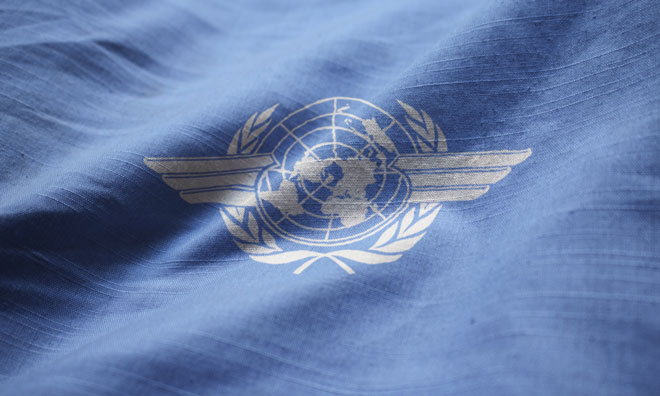

No Country Left Behind – the ICAO motto
“You can’t build up relationships when it is never face to face.
“If ICAO want a global aviation network that necessarily ensures that there is ‘No Country Left Behind’ they need to come and see what the Cook Islands, Vanuatu and Tonga are doing and either advise or congratulate them. What I say is let me mediate that relationship to ensure that both ICAO and the Pacific Islanders have a mutual understanding and appreciation for each party is doing and requires. Let’s do this together rather than in isolation.”
Certainly in order to grant the Pacific Islands a degree of self-ownership and autonomy there needs to be an initial level of mediation to ensure the empowerment process or as Athol coins it: “A nice and gentle nudge”.
“You need to talk to them and not down to them,” and that is the essence of why mediation is so key in the development of the Islands’ aviation network.
ICAO, regulation and ‘Mr AVSEC’
New Zealand is a proud to be a part of the ICAO Security Council and largely represents the Pacific Islands in their seat. Therefore if any Pacific Island State that New Zealand deals with requires assistance they naturally turn to New Zealand in the first instance.
I need to monitor but not dictate…
“For example, we’re looking to replace the x-ray machines across the Pacific Islands,” Athol tells me “but we remain a little behind at present.”
“As far as technology is concerned, I would suggest that Papua New Guinea is a model for the rest of the islands to follow in this instance as it has similar levels of development as Australia and New Zealand.”
“They are the benchmark for the others to attain towards.”
I would suggest that Papua New Guinea is a model for the rest of the islands to follow in this instance as it has similar levels of development as Australia and New Zealand…
X-ray machines typically have a seven year lifespan. The theory behind New Zealand’s collaboration with the Pacific Islands is that it takes the initial financial hit for each island but it is then up to the Pacific Islands to build from this platform and ensure maintenance of equipment.
Oversight
“In order to ensure this, I am always reachable via email as we all recognise here that oversight on what’s going on very important.”
Consequently, due to Athol’s valuable omnipresence on the islands, he has become known as the “Maori fella’” or perhaps the more iconic “Mr AVSEC”.
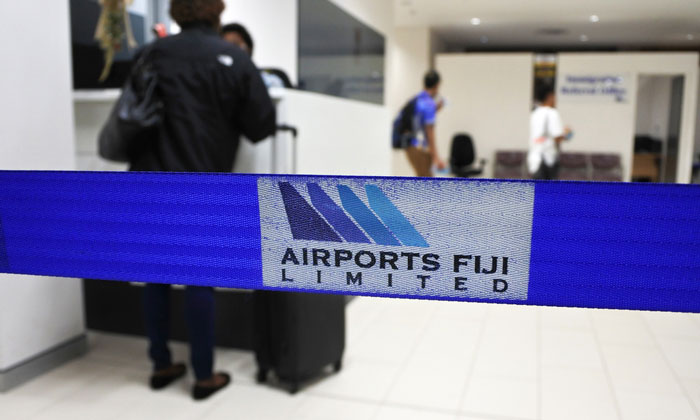

The Islanders’ empowerment is the end goal
“It is crucial that I am always cc’ed in each email. I need to monitor but not dictate.”
At the end of the day, the Islanders’ empowerment is the end goal.
Conclusion
So what have we learnt from Athol’s relationship with the Pacific Islands?
Firstly, that cultural awareness and an understanding of how regional aviation differs according to cultural diversity is key to understanding how we can collectively fulfil the ‘No Country Left Behind’ motto. This can only be achieved by the regulatory bodies physically going to these places and seeing and understanding from empirical observation and experience what each region specifically needs in terms of support. It is up to ICAO, IATA and ACI as global organisations to expand their reach and actually achieve this.
Secondly, what Athol is essentially achieving in the Pacific Islands presents a microcosm for what must be done on a global level. He represents New Zealand, a nation with a well-developed economic, social and aviation network and is going to emerging states (the Pacific Islands) that are still growing and learning how to strengthen their respective economies, societies and aviation infrastructures. The key thing to remember about his role is that it remains one of mediation and support, understanding and the culturally-sensitive education of these states. He represents a lack of condescension but the crucial diffusion of knowledge to those in need. Athol represents precisely what the wider aviation community needs to achieve. Athol represents mutual accountability.
Nations such as the UK, the US, Japan – those who have extensive, historic and well-developed aviation and airport infrastructures – must support those in need. That said, it is the manner in which Athol facilitates Pacific Islands’ development that we can all learn from. He is concurrently an Islander in the way in which he educates and an outsider in the fact that he represents New Zealand as a ‘developed’ nation.
While ICAO, IATA and ACI’s rhetoric is excellent when attending large events such as AVSEC, Passenger Terminal Expo and the like, unfortunately, rhetoric has its limitations and must not be allowed to remain as such.
As Abraham Lincoln was thought to have said: “Actions speak louder than words.”
In this case, the physical presence of supranational support in developing aviation nations will be imperative to unite the aviation industry in collective progress, crucially ensuring that ‘No Country is Left Behind.’
It is in all our interests to prevent this from happening.
Related topics
Air traffic control/management (ATC/ATM), Maintenance, Passenger experience and seamless travel, Recruitment and training, Runways and pavements, Safety, Security, Tourism
Related airports
Auckland Airport (AKL), Brisbane Airport (BNE), Melbourne Airport (MEL), Sydney Kingsford Smith Airport (SYD)
Related organisations
Civil Aviation Authority New Zealand (CAANZ), International Air Transport Association (IATA), International Civil Aviation Organization (ICAO)



